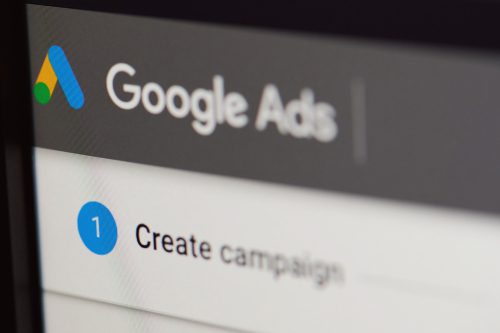
5 Powerful Benefits of PPC Advertising
There are many different benefits to PPC advertising with Google Ads. Some benefits may be more compelling to specific businesses or campaign goals. One thing’s for certain: when done right, advertising your services or products with Google Ads can work very well – and bring in a lot of money.
In this blog, Blue Whale Media will be highlighting the 5 powerful benefits of running a PPC advertising campaign for your business.
Business Goals
Google Ads campaigns can be used to achieve a range of different business goals and objectives. When setting up a new campaign, you can set some predefined goals which will include features to help you reach those objectives. You can also manually optimise and change campaign settings & features to reach these goals more clearly. Some achievable business goals that Google Ads can help with include:
- Online sales
- Lead generation
- Website traffic
- Brand awareness
Measurable & Trackable
Google Ads are designed to be measurable, so you know exactly how successful your campaign is and whether you are meeting your business goals or not.
For website goals, you can link your Google Ads account and Google Analytics account together to share important metrics. This allows you to view how your paid users interact with, navigate through and take actions throughout your website. For an eCommerce website, this is especially important as it allows your website to share details such as product purchases and revenue generated from paid users – allowing you to calculate an accurate Return on Ad Spend for your Google Ads campaign.
Quick
Google Ad campaigns are quick to achieve results. The actual process of setting up and managing a campaign is not necessarily quick, but the fact that you can have your website positioned at the top of the search results on Google with one click of a button is very convenient. Additionally, it’s very easy to make quick additions to the campaign which could vastly improve the performance – things such as adding in negative keywords, changing ad copy, adding new extensions etc.
Control
In a Google Ads campaign, you have control over absolutely everything. Some of the key aspects of controllable targeting include:
- Keywords: with the three options of broad match, phrase match and exact match, you can have your advert to be as inclusive or exclusive to your keywords as you need.
- Gender: you can increase and decrease bids, or advertise exclusively to, users based on their known gender.
- Age: you can increase and decrease bids, or advertise exclusively to, users based on their known age range.
- Device: you can increase and decrease bids, or advertise exclusively to, users based on the device they are using.
- Location: you can have your adverts appear to users in specific locations, from entire countries down to individual postcodes and even radiuses around a geographical position. Locations can also be used to exclude users, or increase/decrease bids in specific areas.
- Audience: you can increase and decrease bids, or advertise exclusively to, users based on their pre-defined audience grouping. This includes the ability to target parents, homeowners, jobseekers etc.
- Affinity: you can increase and decrease bids, or advertise exclusively to, users based on their previous browsing history. This allows you to target people who have extensively researched iPhones, people who are interested in video games, people who have been browsing for cars etc.
The control you have over each individual target setting is above and beyond, it’s not a simple “on and off” switch. You can:
- Segment each and every metric by each and every option highlighted above. This can highlight how people of different ages engage with your adverts etc.
- Increase your bids per setting. Perhaps users in one city are more likely to convert than users in another city, so you can increase your bids for users in the better location.
- Reduce your bids per setting. Perhaps desktop users are not converting as much as mobile users, so you can decrease your maximum bids for users on desktop devices. You can completely eliminate a specific setting by reducing your bids by -100%.
Combine With Other Marketing
One of the most powerful strategies for advertising with Google Ads is retargeting. You can combine the likes of Google Analytics and Facebook Pixel to create a remarketing list which can be imported into Google Ads. This can allow you to show exclusive adverts to those users who have already interacted with your website previously.
A great example of this is if a user landed on your website, had a look at your product (a red coat in this example) and then leaves the website without buying it. We can create a new campaign to target this type of user – who views a product but does not add to cart or purchase – and utilise dynamic adverts to highlight that specific red coat product when they are next searching in the search results. Or you can use a Display campaign and target them with the product whilst they are browsing other websites.
A powerful method of convincing these people to come back and purchase the product is to offer an exclusive, time sensitive discount. According to research, 47% of shoppers would sacrifice their privacy for a better deal. By putting your product back in front of the user, with a new reduced price, you are sure to bring in more conversions!





